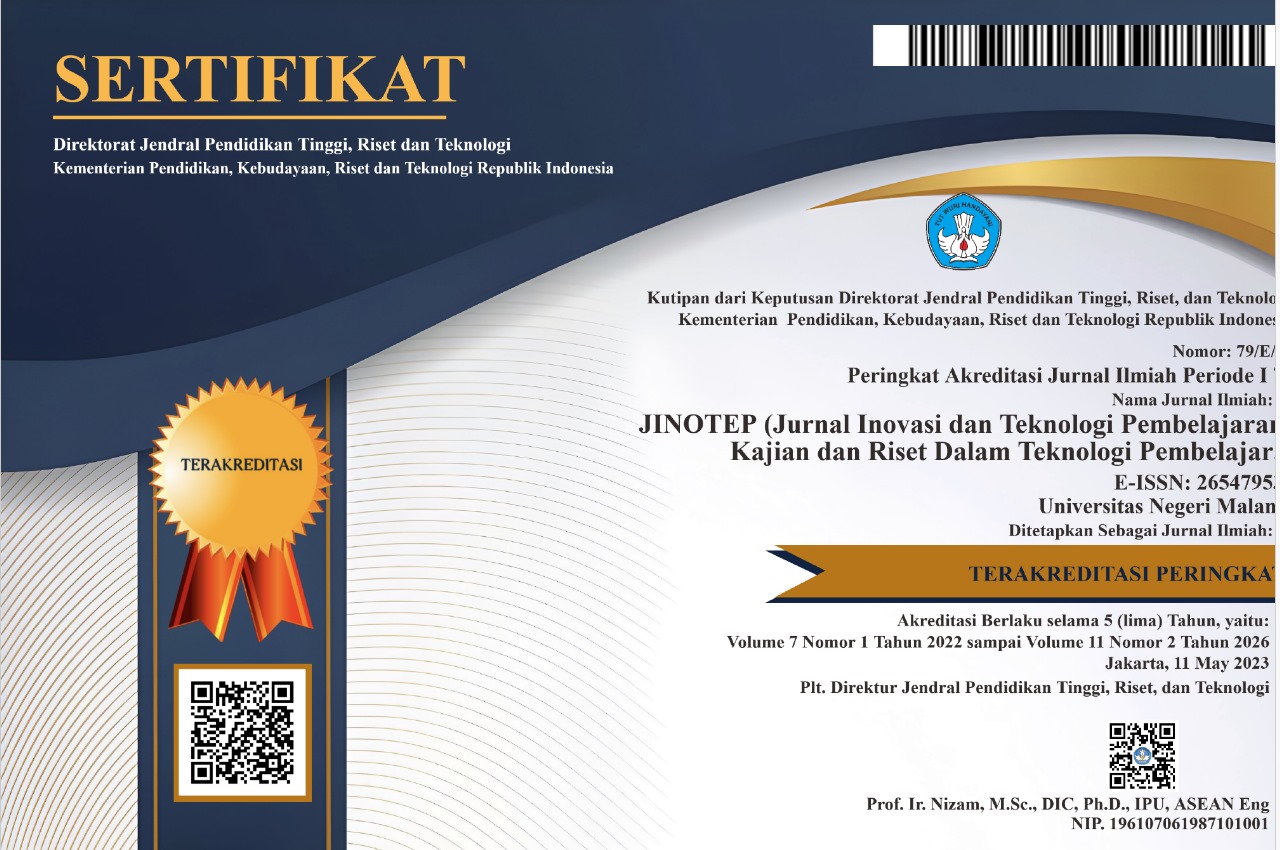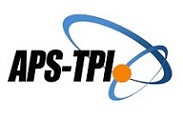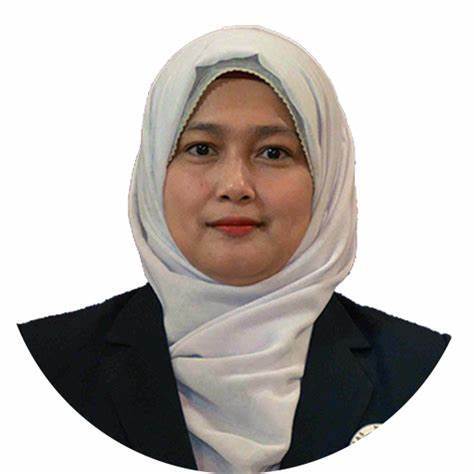Barriers and Coping Strategies of Students with Disability During Inclusive Learning in Higher Education
Abstract
Abstrak: JJumlah penyandang disabilitas yang mengikuti sistem Pendidikan inklusi di perguruan tinggi semakin meningkat seiring dengan adanya Kartu Indonesia Pintar (KIP) Kuliah. Penelitian ini bertujuan untuk mendeskripsikan tantangan hambatan yang dihadapi mahasiswa disabilitas selama mengikuti kuliah inklusi dan strategi koping mahasiswa dalam mengatasinya. Penelitian ini bersifat deskriptif kualitatif dan data dikumpulkan dengan teknik interview, observasi, dan dokumentasi. Data dianalisis dengan metode analisis studi kasus. Hasil penelitian menunjukkan bahwa mahasiswa tunanetra menghadapi hambatan belajar terkait teks, gambar atau simbol/angka, sedangkan mahasiswa tunadaksa memiliki hambatan terkait aktiVitas fisik. Strategi koping yang dilakukan oleh mahasiswa adalah dengan menggunakan Assistive Technology (AT), meningkatkan komunikasi dengan dosen, dan melakukan diskusi kelompok. Dari temuan di atas, disimpulkan bahwa teknik pengajaran dan materi perkuliahan harus beaptasi dengan kebutuhan murid dan dapat digunakan secara universal.
Abstract: The number of disabled students enrolled in the inclusive system in higher education has increased due to a card used to access colleges issued by the Indonesian government known as Kartu Indonesia Pintar Kuliah (KIP Kuliah). The research aims to describe learning barriers encountered by students with visual and physical disabilities during inclusive class and their coping strategies to overcome this predicament. The research is qualitative descriptive, and data were collected by interview, class observation, and documentation. The data were analyzed by using the case study analysis method. The results indicate that written material containing text, pictures, and symbols/numbers are barriers for visually disabled students, while physically disabled students have barriers in terms of class that requires physical activities. Students’ coping strategies are using Assistive Technology (AT), increasing communication frequency with the lecturers, and conducting study groups after class. It is concluded that the lecturer’s teaching technique and material should be adapted to meet the students’ needs and should be universal.
Keywords
Full Text:
PDFReferences
Al Hariri, R., Hardiyana, B., & Dhaniawaty, R. (2021). Pengembangan software multimedia mata kuliah laboratorium pemrograman dasar untuk mahasiswa berkebutuhan khusus. JINOTEP (Jurnal Inovasi Dan Teknologi Pembelajaran): Kajian Dan Riset Dalam Teknologi Pembelajaran, 8(3), 277–288. https://doi.org/10.17977/um031v8i32021p277
Becker, S., & Palladino, J. (2016). Assessing faculty perspectives about teaching and working with students with disabilities. Journal of Postsecondary Education and Disability, 29(1), 65–82.
Biancarosa, G., & Griffiths, G. G. (2012). Technology tools to support reading in the digital age. The Future of Children, 22(2), 139–160. https://doi.org/10.1353/foc.2012.0014
Boyle, J. R., Forchelli, G. A., & Cariss, K. (2015). Note-taking interventions to assist students with disabilities in content area classes. Preventing School Failure: Alternative Education for Children and Youth, 59(3), 186–195. https://doi.org/10.1080/1045988X.2014.903463
Boyle, J. R., Rosen, S. M., & Forchelli, G. (2016). Exploring metacognitive strategy use during note-taking for students with learning disabilities. Education 3-13, 44(2), 161–180. https://doi.org/10.1080/03004279.2014.929722
Brand, S., Favazza, A., & Dalton, E. (2012). Universal design for learning: a blueprint for success for all learners. Kappa Delta Pi Record, 48. https://doi.org/10.1080/00228958.2012.707506
Brobst, K. E. (1996). The process of integrating information from two sources, lecture and text. (Vol. 57, Issues 5-A). ProQuest Information & Learning.
Chataika, T., Mckenzie, J. A., Swart, E., & Lyner-Cleophas, M. (2012). Access to education in Africa: responding to the United Nations Convention on the Rights of Persons with Disabilities. Disability & Society, 27(3), 385–398. https://doi.org/10.1080/09687599.2012.654989
Couzens, D., Poed, S., Kataoka, M., Brandon, A., Hartley, J., & Keen, D. (2015). Support for students with hidden disabilities in universities: a case study. International Journal of Disability, Development and Education, 62(1), 24–41. https://doi.org/10.1080/1034912X.2014.984592
Daiute, C., & Lightfoot, C. (2004). Narrative Analysis. https://doi.org/10.4135/9781412985246
Dell Newton, Deborah A., Petroff, Jerry G., A. G. (2012). Assistive technology in the classroom : enhancing the school experiences of students with disabilities. Pearson.
Du Toit, N. (2018). Designing a model for facilitating the inclusion of higher education international students with disabilities in South Africa. Social Inclusion, 6, 168. https://doi.org/10.17645/si.v6i4.1666
Gibson, S. (2012). Narrative accounts of university education: socio-cultural perspectives of students with disabilities. Disability & Society, 27(3), 353–369. https://doi.org/10.1080/09687599.2012.654987
Hamilton, L. S., Kaufman, J. H., & Diliberti, M. K. (2020). Teaching and leading through a pandemic: key findings from the american educator panels spring 2020 COVID-19 surveys. RAND Corporation PP - Santa Monica, CA. https://doi.org/10.7249/RRA168-2
UU Nomor 8 Tahun 2016 Tentang Penyandang Disabilitas, 31 (2016). http://etd.lib.metu.edu.tr/upload/12620012/index.pdf
Jairam, D., & Kahl, D. H. (2012). Navigating the doctoral experience: the role of social support in successful degree completion. International Journal of Doctoral Studies, 7, 311–329. https://doi.org/10.28945/1700
Kayhan, N., Sen, M., & Akcamete, G. (2015). Opinions of university students with disabilities on current regulations and adaptations at higher education institutions. Procedia - Social and Behavioral Sciences, 197, 635–639. https://doi.org/10.1016/j.sbspro.2015.07.050
Khasnabis, C., Mirza, Z., & MacLachlan, M. (2015). Opening the GATE to inclusion for people with disabilities. Lancet (London, England), 386(10010), 2229–2230. https://doi.org/10.1016/S0140-6736(15)01093-4
Merello, Á. (2021). Barriers and facilitators for children with special educational needs education during the COVID-19 pandemic: A systematic literature review in 2020. https://www.diva-portal.org/smash/record.jsf?pid=diva2:1552898
Mitchell, D. (2005). Introduction: Sixteen propositions on the contexts of inclusive education. Contextualizing Inclusive Education Evaluating Old and New International Perspectives, 1–21.
Mullins, L., & Preyde, M. (2013). The lived experience of students with an invisible disability at a Canadian university. Disability & Society, 28(2), 147–160. https://doi.org/10.1080/09687599.2012.752127
Reich, J., Buttimer, C. J., Fang, A., Hillaire, G., Hirsch, K., Larke, L. R., Littenberg-Tobias, J., Moussapour, R. M., Napier, A., Thompson, M., & Slama, R. (2020). Remote learning guidance from state education agencies during the COVID-19 Pandemic: a first look. https://doi.org/10.35542/OSF.IO/437E2
Robinson, S. (2002). Teaching high school students with learning and emotional disabilities in inclusion science classrooms: a case study of four teachers’ beliefs and practices. Journal of Science Teacher Education, 13(1), 13–26. http://www.jstor.org/stable/43156283
Rose, D., Hasselbring, T., Stahl, S., & Zabala, J. (2005). Assistive technology and universal design for learning: Two sides of the same coin. Handbook of Special Education Technology Research and Practice, April 2016, 507–518. http://craigcunningham.com/nlu/tie536fall09/Assistive Technology and UDL_TwoSidesoftheCoin.pdf
Simons, H. (2009). Case Study Research in Practice. https://doi.org/10.4135/9781446268322
Smith, C. (2020). Brief peer reviewed essay multidisciplinary perspectives in higher education online graduate student well-being : learning and living during the COVID-19 pandemic. Inci Yilmazli Trout. 5(1), 150–155.
Van Hove, G., Schippers, A., & Bakker, M. (2018). Editorial: Students with disabilities in higher education. Social Inclusion, 6(4), 103–106. https://doi.org/10.17645/si.v6i4.1792
Yin, R. K. (2014). Design and methods, third edition, applied social research methods series, Vol 5. In Sage Publications (pp. 1–181).
Young, J., & Donovan, W. (2020). Shifting to online learning in the COVID-19 spring. Pioneer Institute: Public Policy Research, April, 1–6.
DOI: http://dx.doi.org/10.17977/um031v9i22022p176
Refbacks
- There are currently no refbacks.
Copyright (c) 2022 Fitria Hardini, Siti Jamilah Br Tarigan, Vu Thi Thu Trang

This work is licensed under a Creative Commons Attribution-ShareAlike 4.0 International License.
======================================================================
Jurnal Inovasi dan Teknologi Pembelajaran published by Universitas Negeri Malang in collaboration with the Asosiasi Program Studi Teknologi Pendidikan Indonesia (APS TPI) and Ikatan Profesi Teknologi Pendidikan Indonesia (IPTPI) with a MoU.
Publisher Address:
Educational Technology Laboratorium, Building D5, 1st Floor
Faculty of Education, Universitas Negeri Malang
Semarang St. No. 5, Malang City, East Java Province, Postal Code 65145
Email: jinotep.fip@um.ac.id
======================================================================

JINOTEP is licensed under a Creative Commons Attribution-ShareAlike 4.0 International License.
JINOTEP Statistics (Since July 13th, 2020)



.png)




.png)
1.png)
1.png)
4.png)
2.png)
1.png)
1.png)
.png)


_3.png)





1.png)
.png)